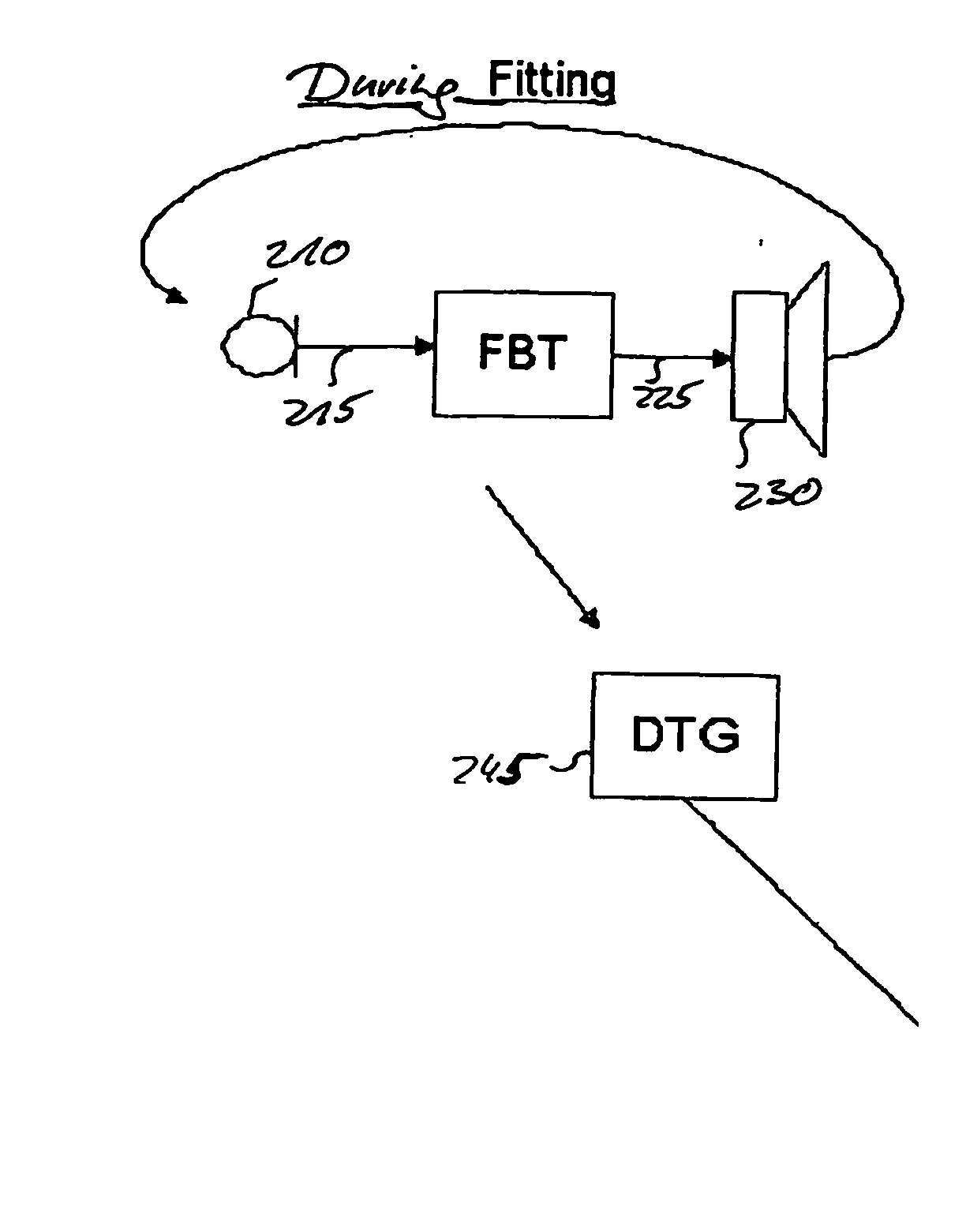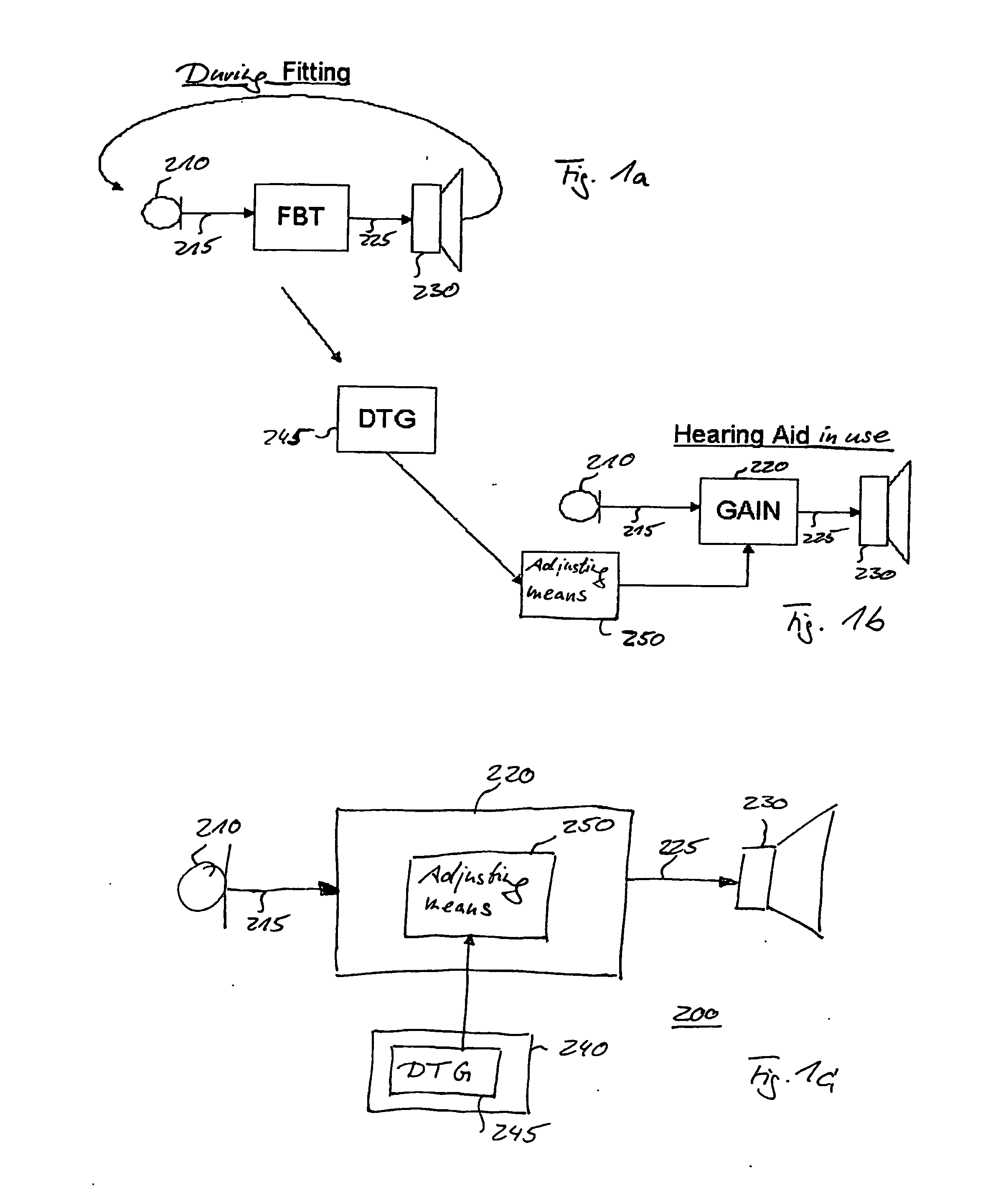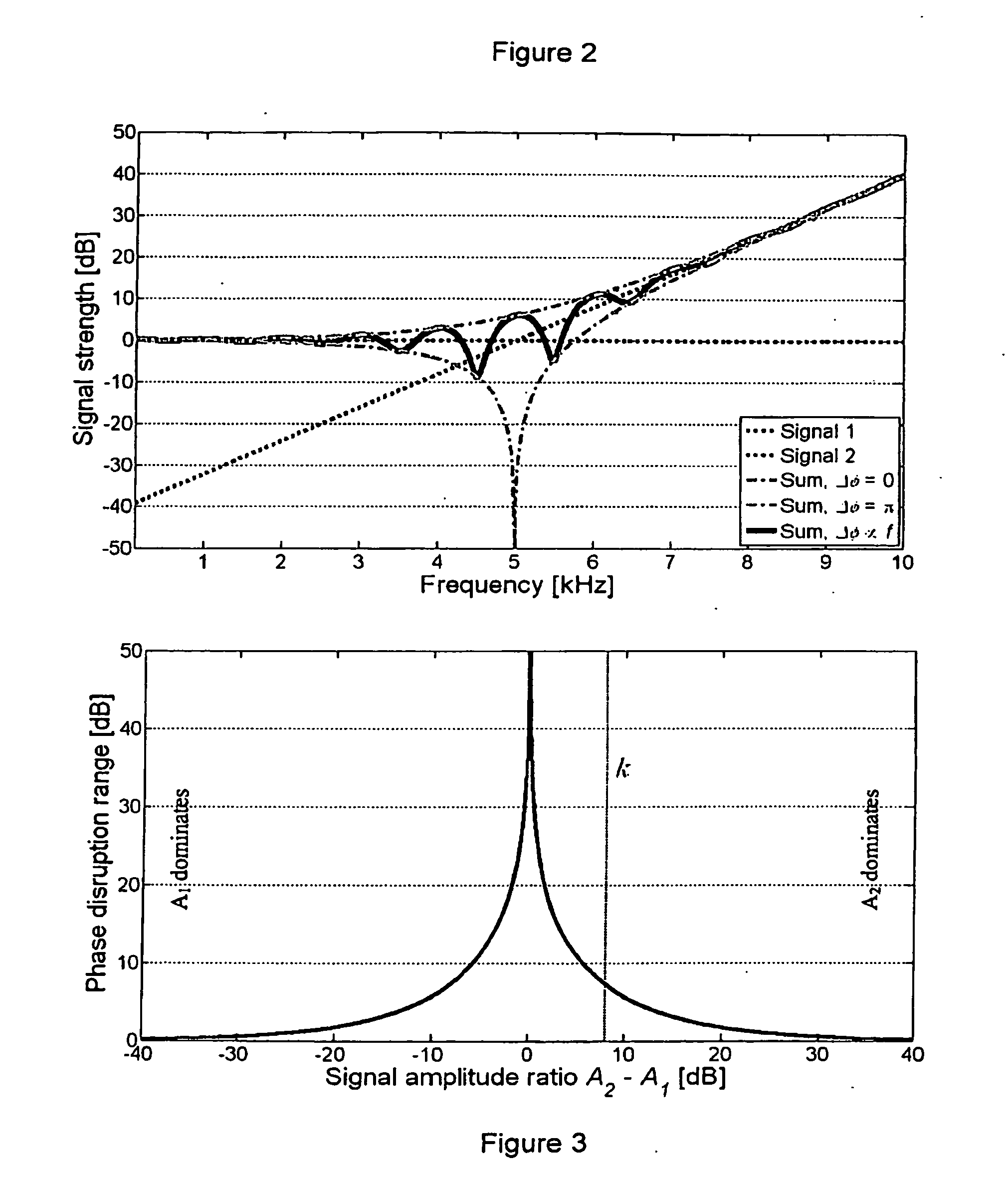Hearing aid and method of compensation for direct sound in hearing aids
a technology of direct sound and hearing aids, applied in the field of hearing aids, can solve the problems of poor speech intelligibility, unnatural rasping sound of disrupted signals, and often applied hearing aid gain, and achieve the effect of improving speech intelligibility in nois
- Summary
- Abstract
- Description
- Claims
- Application Information
AI Technical Summary
Benefits of technology
Problems solved by technology
Method used
Image
Examples
Embodiment Construction
[0029]When describing the invention according to embodiments thereof, terms will be used which are described as follows.
[0030]Compressor: a device commonly utilized in modern hearing aids which operate to compress the dynamic range of the input signals. Useful for treatment of presbyscusis (loss of dynamic range due to haircell-loss). Actually, compressing hearing aids often apply expansion for low level signals, in order to suppress microphone noise. Often also used as a soft-limiter in order to limit maximum output level at safe or comfortable levels. The compressor has a non-linear gain characteristic and, thus, is capable of providing less gain at higher input levels and more gain at lower input levels. Hearing aids embodying a compressor as signal processor are often referred to as non-linear gain or compressing hearing aid.
[0031]Phase disruption: The sound level at the eardrum of the user is a superposition of the unaided direct sound and the amplified sound from the hearing a...
PUM
 Login to View More
Login to View More Abstract
Description
Claims
Application Information
 Login to View More
Login to View More - R&D
- Intellectual Property
- Life Sciences
- Materials
- Tech Scout
- Unparalleled Data Quality
- Higher Quality Content
- 60% Fewer Hallucinations
Browse by: Latest US Patents, China's latest patents, Technical Efficacy Thesaurus, Application Domain, Technology Topic, Popular Technical Reports.
© 2025 PatSnap. All rights reserved.Legal|Privacy policy|Modern Slavery Act Transparency Statement|Sitemap|About US| Contact US: help@patsnap.com



